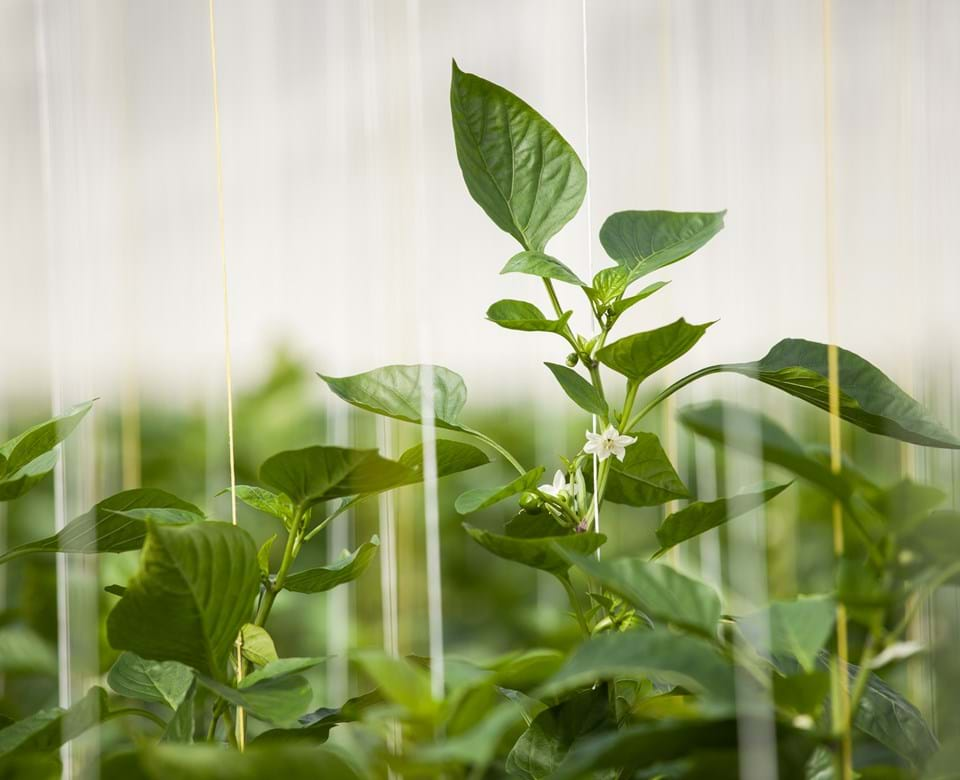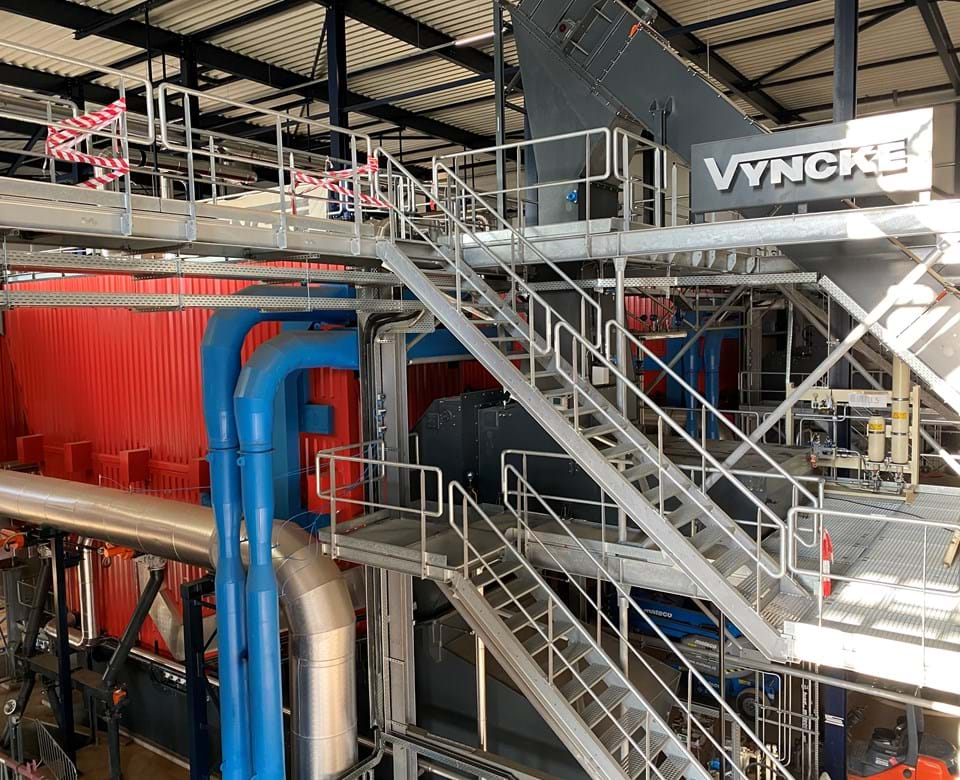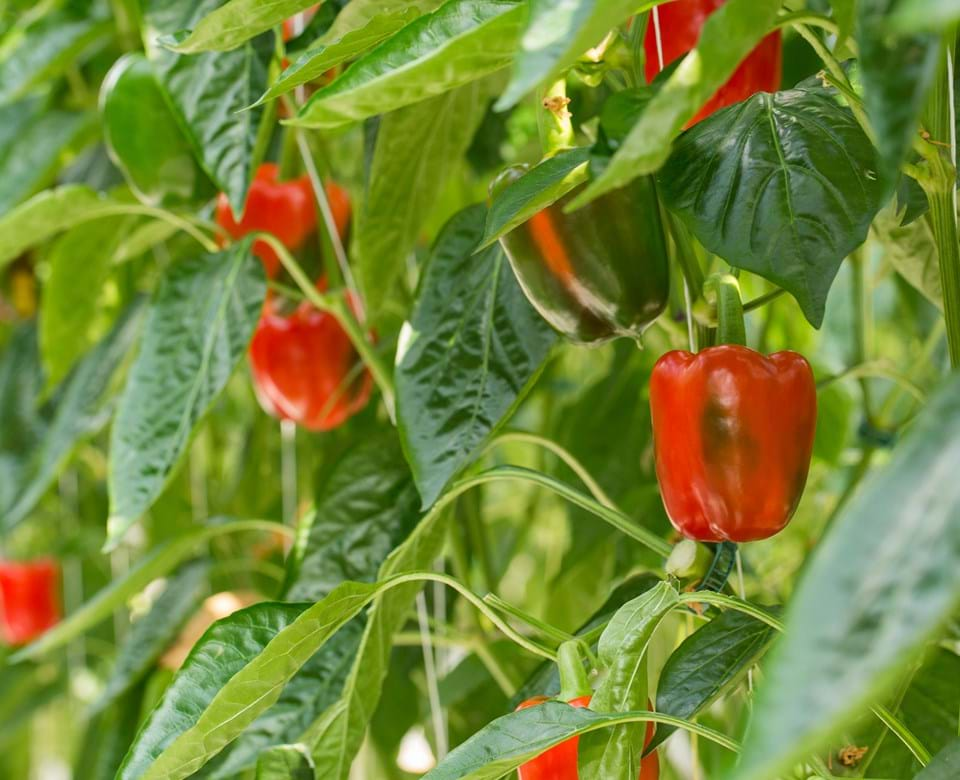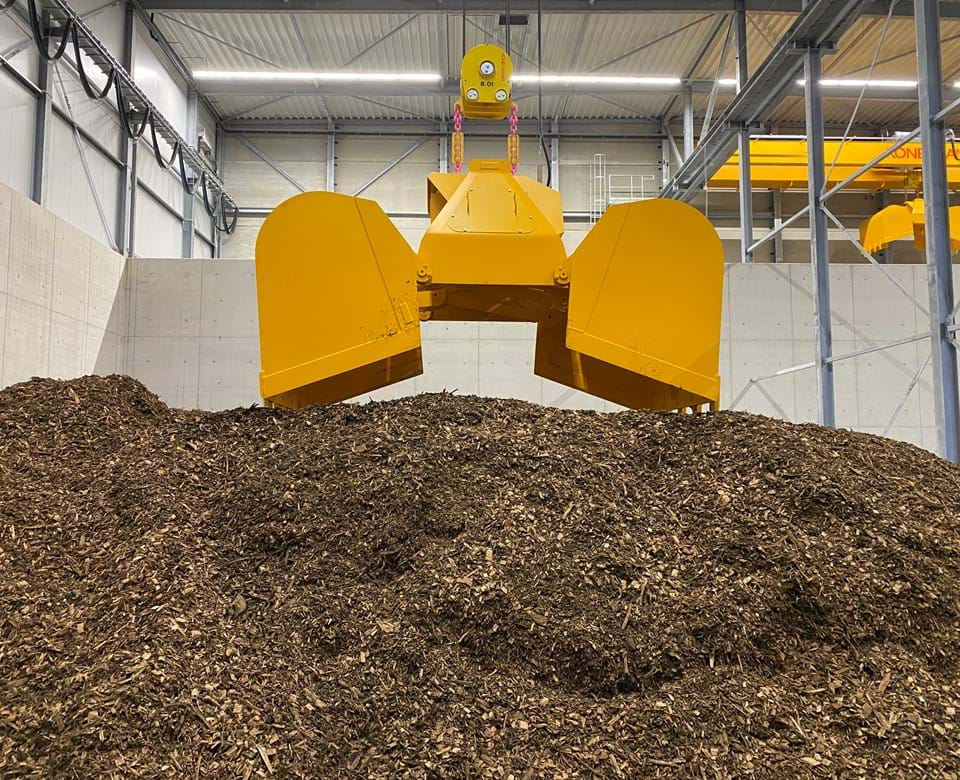Second energy source
Greenhouse horticulture in the Netherlands has set itself the goal of growing fossil-free (without gas) by 2040. The geothermal energy installation was the first step towards fossil-free cultivation.
The biomass installation is used as a second energy source to produce heat for the greenhouse without using natural gas. This installation will be used in the cold period as a supplement to the geothermal energy.
The biomass installation at Hoogweg consists of 2 boilers, each boiler has a capacity of almost 15 MW. The process is highly automated. Delivered wood chips are stored in a bunker, the unmanned overhead crane ensures a continuous supply of wood chips to the boiler. The process operator ensures the correct settings for optimal combustion.





